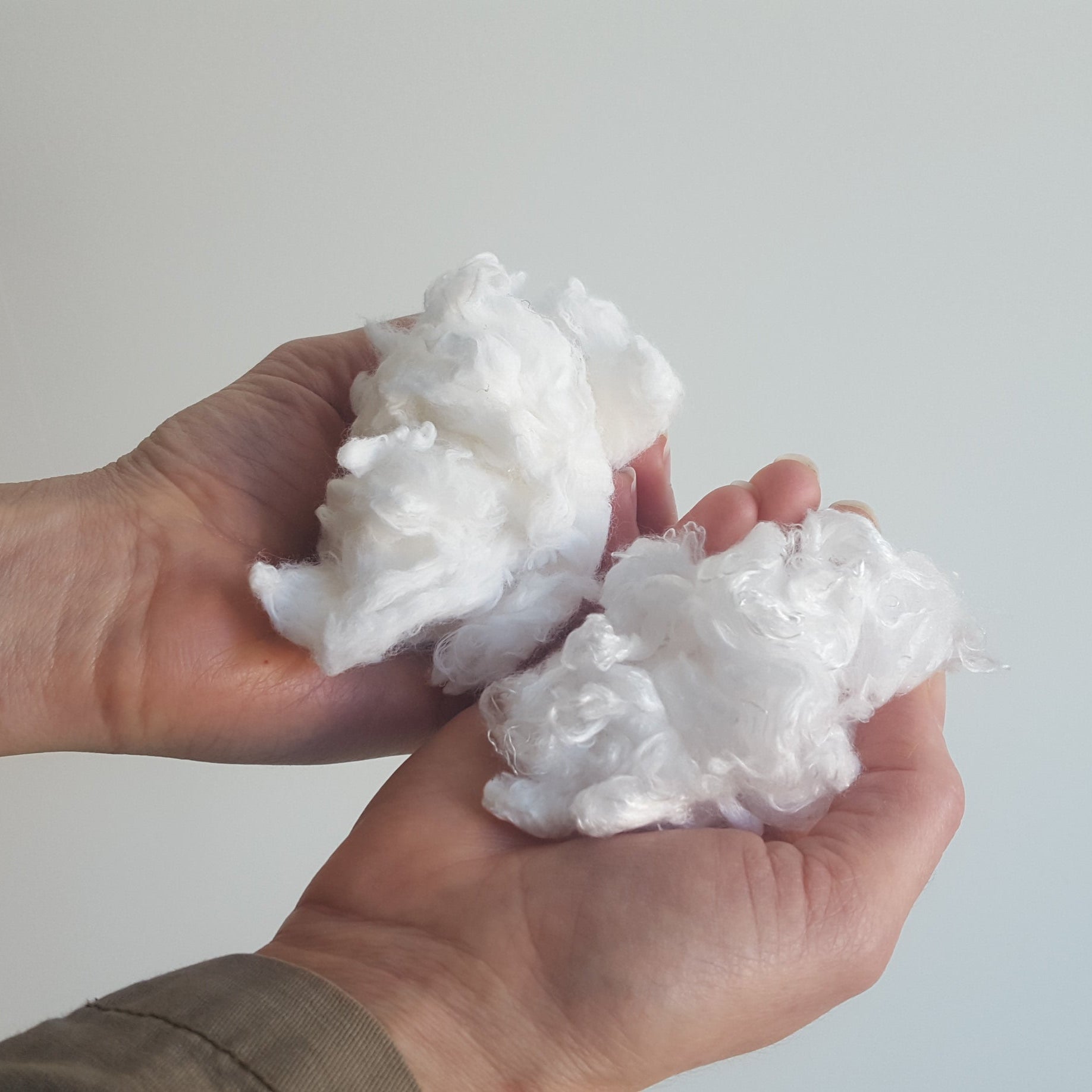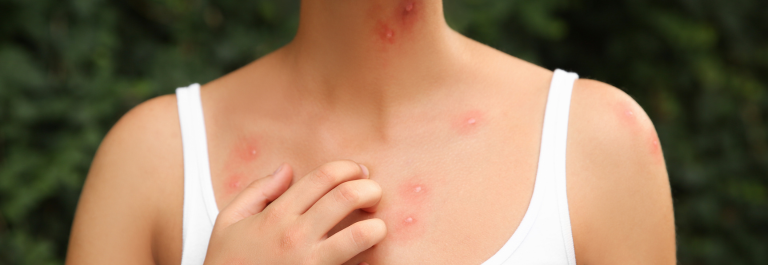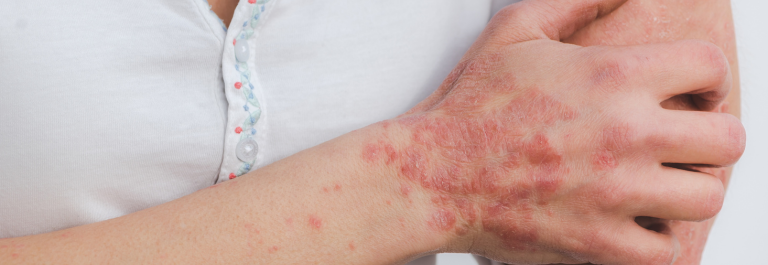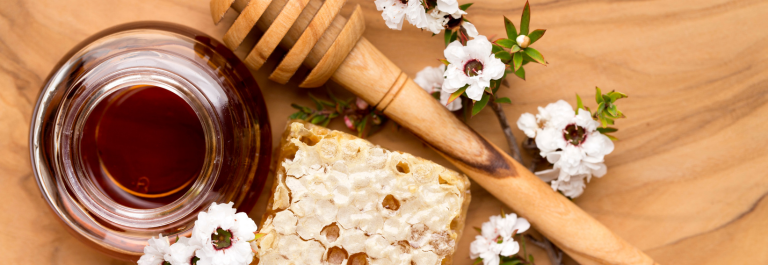The sun's out. The hot weather is finally here... and you've broken out in a rash. These summer months are beautiful, but the extra sun exposure, sweat, and time outdoors can wreak havoc on dry skin.
If this feels all too relatable, we're here to cover everything you need to know about itching in summer, including:
-
Common summer skin rashes and their causes
-
How to treat affected skin naturally
-
Tips to prevent a summer rash
Read on to learn more about taking back control and feeling good in your skin this summer.
Summer Skin Rashes: Common Types You Should Know About
Eczema
While studies have shown that soaking up the sunshine can help to ease eczema, too much sun exposure could have the opposite effect. Particularly in the heat, the added sweat and dehydration can irritate dry skin. You might also develop eczema patches along with hayfever symptoms as the body's immune system flares up against environmental allergens, such as pollen.
Heat Rash
Also called prickly heat, heat rash is caused when our sweat ducts become clogged, trapping perspiration under the skin. As the rash bumps burst and sweat is released, you may feel a prickly sensation across the skin. This typically occurs in parts of the body with excessive sweating or friction, such as the groin area, skin folds, or underarms.
Sunburned Skin
Sunburn is caused by overexposure to the sun's ultraviolet rays, creating painful red burns across the body. In severe cases, repeated sunburn can lead to diseases such as skin cancer requiring urgent care.
Although rare, some individuals may also experience polymorphous light eruption caused by an allergic reaction to ultraviolet sunlight. This rash is characterized by tiny, inflamed bumps across the chest, arms, neck, or face.
Hives
Notably, hives are caused by allergic reactions to many environmental factors, such as sun, pollen, food, or bug bites. Itchy skin, a red rash, and welts characterize this common skin condition.
Yeast Infection
Over the summer, keeping our bodies cool and dry is harder, especially if we're dipping in and out of the pool, wearing sweaty clothes, or taking more frequent showers. Humid weather creates the perfect conditions for yeast infections to thrive, especially in warm, moist places such as skin folds and the groin area. These fungal infections can cause the skin to crack, flake, and peel, not to mention intense itching.
Contact Dermatitis or Plant Related Rashes
As the temperatures soar, the last thing we want is to feel cooped up indoors. But we must take precautions during outdoor adventures. Contact dermatitis is a common rash caused by the oily resin in poison ivy, oak, and sumac. If we come into contact with these plants, the oil can linger on our skin and clothes, causing intense itching, inflammation, and redness.
Water-related Rashes
-
Seabather's eruption is caused when tiny fragments of jellyfish larvae and sea anemones get caught under your bathing suit or tight clothes. This triggers an itchy rash in the specific, exposed areas and a prickly sensation across the skin.
-
Swimmer's itch, on the other hand, is caused by microscopic parasites from infected snails, which burrow into your skin. This results in tiny red pimples and itchy blisters across the body.
-
Beyond fresh water, hot tub folliculitis is characterized by an itchy red rash of little, tender bumps underneath your swimsuit and around hair follicles. This is caused when the hot water in swimming pools or hot tubs breaks down the chlorine that usually attacks water-borne bacteria, disrupting the water's safe acidity level and resulting in contamination.
How To Naturally Treat My Summer Skin Rashes
So you've got a rash and want to know the next best step? We've got you covered.
Wear Light, Breathable Clothing
Firstly, particularly in the summer, you must allow your skin to breathe. To prevent blocked sweat glands, try switching any tight-fitting clothing in your wardrobe for more breathable fabrics to allow perspiration to escape the skin.
Remedywear™ was specially designed to provide soft, comfortable garments for people of all ages that prevent overheating. Their unique designs are made from TENCEL fabric with zinc-embedded fibers, which soothe and tame itchy eczema flare-ups. Zinc oxide also stops bacterial growth and blocks odor, keeping you fresh even on the sunniest days.
As well as exceptional comfort, Remedywear provides 35-50+ UV protection for sensitive skin.
For the fullest protection on bright days, we'd recommend Remedywear Long Pants for Adults or Kids and the Remedywear Long Sleeve Shirt for Adults or Kids.
To keep intimate areas cool and dry, we'd suggest the Remedywear™ Hypoallergenic Bra, the Remedywear™ Men's Boxer Briefs, and the Remedywear™ TENCEL Socks for Adults or Kids. These soft, gentle fabrics help to prevent a build-up of humidity and sweat, reducing the impacts of heat rash and protecting you against yeast infections.
Moisturise
Although it's important we stay cool and dry, that's not to say that we shouldn't also support our skin to retain its nourishing moisture and heal from itchy sensitivity. Our Organic Manuka Skin Soothing Cream is a wonderful choice for all summer skin rashes. Rub this oil-based balm into the affected area to benefit from its six natural ingredients without stinging or burning. When fighting yeast infections or hot tub folliculitis, manuka oil is more potent than tea tree oil when battling bacteria and fungus, so you know you're protected in the best ways.
We'll likely take more frequent showers over the summer with all the extra heat. This Coconut and Sunflower Oil Soap Bar is a lovely choice to stay clean and fresh while helping our skin to maintain moisture throughout the day.
How To Prevent A Summer Rash
Even better than treating your sun rash is preventing these skin conditions in the first place. Try out these tips to help keep your mind at ease:
-
Use air conditioning where possible, and try to switch out of sweaty clothing frequently. This will help prevent the onset of prickly heat rash.
-
Wear broad-spectrum sunscreen to help protect yourself from sun allergy and UV rays.
-
Wear a wide-brimmed hat is also a summer essential! It is worth noting that the sun's UV rays can be especially intense in the late spring or early summer, with cooler breezes disguising the risk.
-
Briskly rub your body down with a clean towel after swimming in infested water to help prevent swimmer's itch or seabather's eruption.
-
Use cool compresses or calamine lotion to prevent rashes from spreading or inflaming.
-
Seek professional advice from your board-certified dermatologist, medical director, or doctor if any of your summer rashes persist or cause you concern.
Take Back Control This Summer
Use these tips to help you identify, treat, and prevent summer rashes today.










